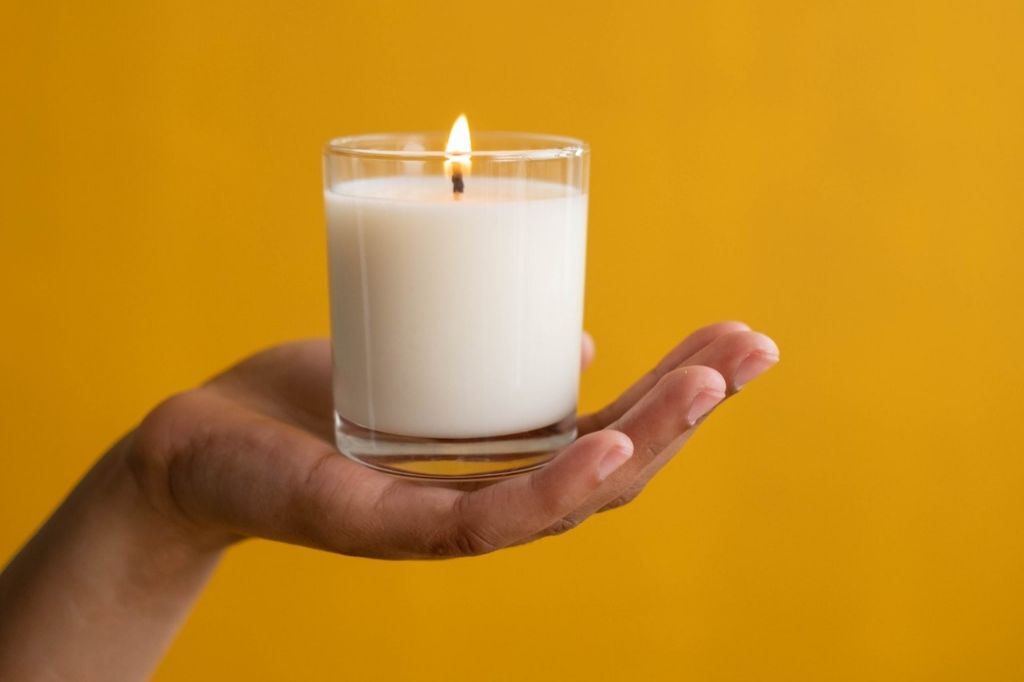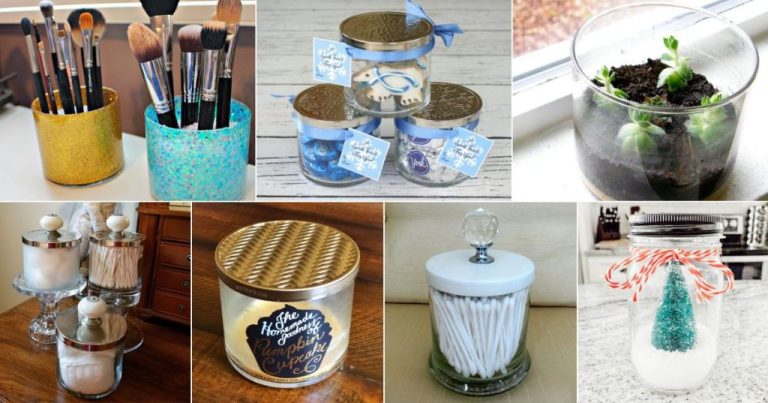Why Is My Candle Wax Not Burning Evenly?
Candles can provide lovely illumination, and the gentle flicker of a candle flame can be soothing. However, it can be frustrating when candle wax does not burn evenly. The wax can become lumpy or pool to one side. The wick may tunnel down through the wax without spreading the melt pool. Uneven burning can lead to wasted wax and a short candle life. There are several common reasons for uneven candle burning, ranging from wick issues to poor candle making.
This guide will explore the key causes of uneven wax burning and provide tips to fix the problem. With some troubleshooting and minor adjustments, you can get back to enjoying the steady glow of a well-burning candle.
Wick Issues
One of the most common reasons for uneven candle burning is an improperly sized or placed wick. The wick needs to match the width of the candle and jar in order to burn evenly. As a general rule, the wick should be between 1⁄8 and 1⁄4 inches long to produce the best flame for even melting[1]. If the wick is too small for the candle, it won’t provide enough heat to melt the wax at the edges and corners. Conversely, an oversized wick will create too large of a flame, burning the wax near the wick faster than the outer edges.
The wick also needs to be centered within the candle for even burning. If the wick is off-center, the flame will be closer to one side, causing wax to melt faster on that side. Check that the wick is centered when pouring candles or inserting wicks into containers.
Improper wick trimming can also lead to uneven burning. The ideal wick height is around 1⁄4 inch when lighting the candle. Trimming the wick too short can result in the flame being too small to melt the wax fully. On the other hand, leaving the wick too long makes the flame too large and hot.[2] Trim the wick periodically to maintain the ideal height as the candle burns.
Insufficient Melting
One common cause of uneven candle wax burning is that the candle wax is not melting properly or sufficiently. This can happen if the candle is too cold for the wax to melt and pool evenly. The ideal burning temperature for most candle waxes is between 120-150°F. If the room temperature is cooler than this, the wax will struggle to melt and pool well. According to Nikura, soy wax for example melts between 113-127°F. If your room temperature is below this range, the soy wax will not melt sufficiently.
Insufficient melting can also occur if you have chosen a wax with too high of a melting point for your environment. Paraffin wax for example has a melting point around 130-150°F according to the Blended Waxes blog. If you live in a cooler climate, this wax may be too hard to melt properly. Choosing a wax with a lower melting point like soy, beeswax, or a blended wax can help ensure even melting and pooling.
To fix insufficient melting, try moving the candle to a warmer room in your home. You can also use a candle warmer or place the candle near a gentle heat source to reach the ideal temperature range. If the wax still won’t melt evenly, you may need to switch to a different wax type with a lower melting temperature.
Poor Wax Quality
One cause of uneven candle burning is low quality or improperly mixed wax. Candle wax needs the right formulation to ensure proper melting and an even burn.
If wax is not mixed thoroughly, it can contain air pockets that disrupt the melt pool. Air trapped in the wax acts as an insulator, preventing even heat distribution. This can lead to tunneling or an uneven flame.
The wax also needs the ideal hardness. Wax that is too soft can melt too quickly and burn unevenly. Wax that is too hard may not melt properly at all. Most candle wax should have a melting point between 120-150°F to ensure proper melting and burning.
To avoid poor wax quality, it’s best to start with high-quality wax from a reputable supplier. Pay close attention to the wax recipe and formulation. Always mix wax thoroughly according to directions to minimize air pockets. Testing wax samples can also help identify any burning issues before making finished candles.
Proper wax selection, mixing, and preparation helps eliminate many common causes of uneven burning. Following wax supplier guidelines and best practices will improve candle quality.
Sources:
https://nomadnoe.com/blogs/the-blog/what-are-the-healthiest-candle-waxes-to-burn
Jar or Vessel Shape

The shape and size of the jar or vessel holding the candle can impact how evenly it burns. Certain jars are more prone to issues like tunneling or drowning the wick:
- Drafts or improper airflow – Tall, narrow containers can create drafts or inadequate airflow around the candle, leading to uneven melting and burning. Placing the candle in a sheltered area can help prevent drafts.
- Jar too small or large – If the jar is too small, the wax can overheat and tunnel down the center. Overly large jars may struggle to pool wax near the wick, starving it of fuel. Use a jar sized for the wax volume. (Source)
- Uneven surface – Candles placed on uneven surfaces risk pooling wax on one side of the container. Keep candles on flat, level surfaces for best results.
Choosing the right jar shape and size for the type of wax and wick can prevent many uneven burning issues. Candle toppers can also help restrict the melt pool when needed.
Fragrance Issues
Some uneven burning can be caused by issues with the fragrance oil used in the candle. Using too much fragrance oil or a fragrance oil that is incompatible with the wick can lead to an uneven burn.
Too much fragrance oil can clog the wick and prevent it from burning properly. According to The Candle Pour, no more than 10% fragrance oil should be used in container candles. Exceeding this amount can cause the wick to drown and the wax to pool rather than burn evenly.
Additionally, some fragrance oils are known to cause issues with certain wick types and sizes. As LAFCO Candles explains, pairing the wrong wick with a particular fragrance can lead to tunneling or an irregular melt pool. Consulting the manufacturer’s recommendations for wick pairings can help prevent uneven burning from incompatible fragrance and wick combinations.
Dirty Container
If your candle jar has a buildup of soot, wax residue, dust particles or other debris, it can prevent the wax from melting and burning evenly. As the candle burns, soot and wax dripping down the sides of the glass can cause uneven pooling and tunneling flames.
It’s important to clean the inside of the candle jar before each use to remove any residue buildup. Use hot water, mild dish soap and a soft cloth or sponge to gently scrub away any soot and wax on the sides and bottom of the glass. For tough buildup, fill the jar with hot water and dish soap and let it soak before scrubbing. Rinse and dry thoroughly.
You can also use a hair dryer to gently warm the jar and loosen wax drips before cleaning. Lint-free cloths work well to buff away dust and debris. Proper cleaning between uses helps remove anything that might obstruct wax melting and lead to uneven burning.
Improper Curing
One of the most common reasons for uneven burning is that the candle was not properly cured before use. Curing is the process of allowing the candle wax to completely harden and stabilize after being poured into the container. When a candle cools too quickly or is not given enough cure time, the wax molecules may not have settled evenly, creating weak spots that can lead to an uneven melt pool when burned.
Candles that are cooled too rapidly after pouring tend to end up with an uneven texture on the surface as the wax crystallizes at different rates. Quick cooling can also cause cracks or divots in the wax. When burned, these imperfections cause the wax to melt in an irregular manner. According to The Armatage Candle Company, slow cooling over 24-48 hours allows the wax time to shrink uniformly as it hardens and improves the burn quality of the finished candle.
Likewise, insufficient cure time can result in an uneven burn. Most candle wax needs a minimum of 1-2 weeks to fully cure and stabilize after being poured and cooled. During the curing period, the candle becomes denser and more rigid as the wax molecules bond together. Rushing to burn a candle before it has cured may cause it to tunnel or form a lopsided melt pool when lit. Late Harvest Candle Co recommends allowing soy candles to cure for at least 2 weeks before lighting to prevent uneven burning.
To ensure even burning, candle makers recommend pouring candles into slightly warm containers, cooling them very gradually, and then allowing ample time to cure before use. Following proper cooling and curing techniques allows the wax to set up uniformly and burn consistently when lit.
Fixing Uneven Burning
There are a few techniques you can try to fix an unevenly burning candle and improve its performance:
- Trim and center the wick – Use scissors or nail clippers to trim the wick to 1⁄4 inch before lighting. Make sure the wick is centered in the wax pool.
- Warm the candle before lighting – Let the candle come to room temperature before lighting to allow the wax to melt more evenly. A cold candle right out of the fridge or cupboard can lead to tunneling.
- Change the vessel or wax – Switching to a wider vessel can allow more even wax pooling and less tunneling. Using a higher quality wax formulated to resist tunneling can help too (https://fernweheditions.com/blogs/scent-stories/how-to-fix-candle-tunneling-and-get-an-even-burn).
Taking these steps before lighting can help your candle burn more evenly down to the bottom without tunneling in the middle.
When to Discard
If you’ve tried the fixes mentioned in this guide and are still experiencing uneven burning, it may be time to discard the candle. There are a few signs that indicate your candle is no longer salvageable:
Excessive soot buildup – If the jar is coated in thick black soot that cannot be cleaned, this impairs wax pooling and airflow. Per Burning Tips – Lunatigre, stop burning a candle when heavy soot accumulates.
Major wax issues – Candles should be discarded when only 1/4 inch of wax remains according to Reddit and Rustic Dreams. This prevents the risk of heat damage to the vessel. If the wax pool isn’t forming correctly even after trimming the wick, it’s best to stop using it.
The candle doesn’t burn evenly despite troubleshooting – If wick issues, poor scent throw, jar shape problems, and other fixes have been tried but the candle still tunnels and leaves wax around the edges, it may be past saving.
When a candle cannot be salvaged, it’s best to discard it and try a new one. Continuing to burn a severely problematic candle risks vessel damage, wasted wax, and poor performance.






